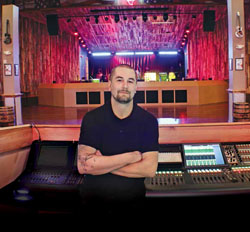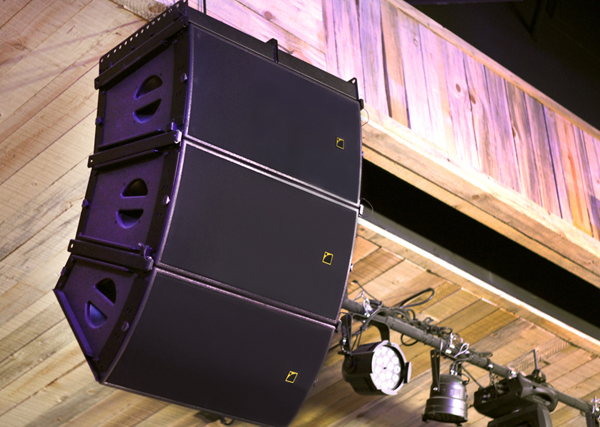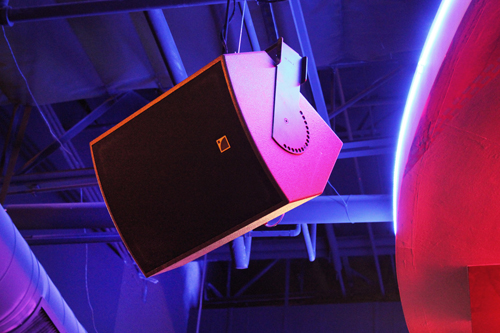
Fitting The Space
A primary factor influencing the concert system design is lack of headroom—literally. Ceiling height in most of the locations is relatively low, cutting main loudspeaker options.
“Line arrays don’t behoove us in this situation because they’re too tall. There’s not enough ceiling height for them to be effective,” Maichele notes. “We needed something that can deliver concert quality and output, but from a much lower profile.”
However, the mains still need to be in the air in order to attain enough sonic distribution to the farther reaches, despite the impediments of the guitar bar as well as numerous flown television screens. A number of potential solutions were evaluated, with the final choice being L-Acoustics ARCS Constant Curvature line source loudspeakers.
ARCS loudspeakers can be deployed either as horizontal or vertical arrays, designed to provide a tight directivity pattern that helps focus on the audience areas while avoiding reflective surfaces.
Specifically at the Toby Keith locations, Maichele has found an optimum result from two to four ARCS Focus and Wide loudspeakers (each with 15- or 30- x 90-degree dispersion) deployed at left and right, receiving a stereo feed. The footprint of a four-box array with cabinets in a horizontal configuration is less than 60 inches tall.
Currently, companion L-Acoustics SB18 (single 18-inch, dual bass-reflex enclosure) subwoofers are housed in chambers beneath the stage, but planning is underway to start flying them with the mains in the near future.
“We want all sound originating from the same source location to boost coherence,” Maichele says. “Placing everything together helps in that goal, and it will also distribute low-end energy more efficiently and evenly.”
In the interest of furthering sonic consistency, he sought to implement distributed loudspeakers from the same provider. As a result, L-Acoustics 12XTi (12-inch), 8XTi (8-inch) and 5XT (5-inch) coaxial loudspeakers are the choice, all receiving a mono feed.
“These loudspeakers are arranged, as much as possible, in concentric rings that emanate outward from the stage,” he explains. “There’s simply not much symmetry in any of these locations—the architect doesn’t like to design that way. This creates some coverage challenges, so as much as possible, all delays face away from the stage, timed in relation to the mains. We usually run them in groups of two to four loudspeakers on their own amp and processing channel.”
At the outset of each design, Maichele does modeling in SoundVision, the 3D acoustical simulation program from L-Acoustics, which helps in determining optimum loudspeaker locations as well as pointing out potential trouble spots. One challenge in particular is that the bulk of the finished interior construction materials are corrugated metal and paneled wood, and that aesthetic can’t be compromised with acoustical treatment.
Dual Duty
A mixture of L-Acoustics LA8 and LA4x amplified controllers drive all loudspeakers and subwoofers racks. “The recently upgraded firmware now allows EQ of each individual output channel, as well as presets,” he notes. “It offers excellent flexibility in terms of control and represents a true value for integrators.” All processor settings (EQ, delay, etc.) are established in the amplified controllers with the LA Network Manager software platform.
Because each venue functions as a dining establishment 80 percent of the time, another priority for the main system is delivering background music, in conjunction with the distributed loudspeakers. Various sources (satellite TV boxes and so on) feed a BSS Soundweb London network with presets, recalls and routing.


